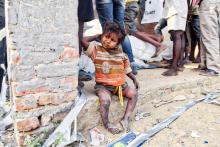Public-Private Partnerships and the poor - Case Study- Dolphin Coast water concessions, Dolphin Coast, South Africa
This document studies the existing water concession provisions in Dolphin Coast area in South Africa, including various outcomes before the report was published; different perceptions of several stakeholders; and its impact on poor groups in that particular area. It is a summary of the evaluation of the public-private partnership and its impact.
